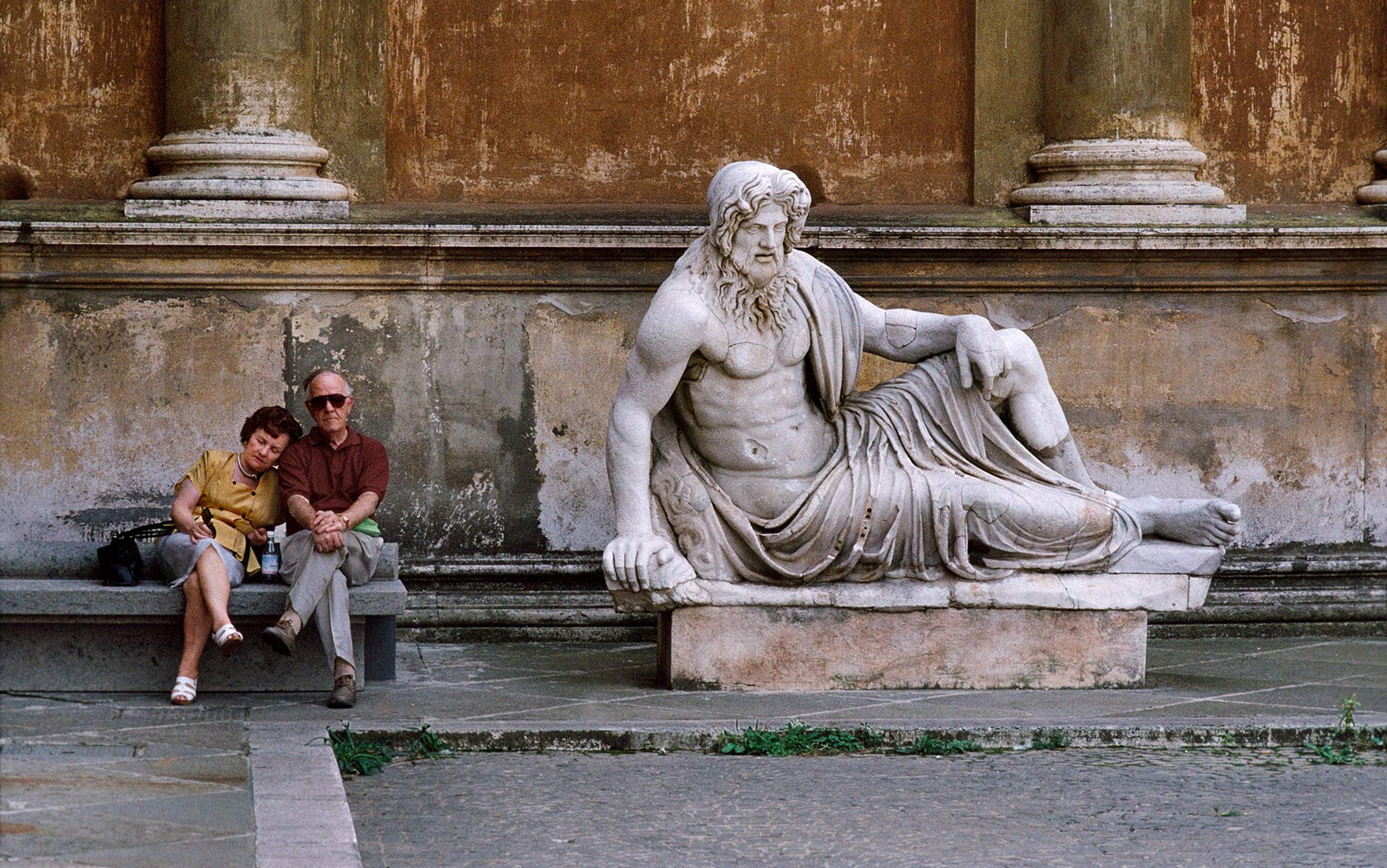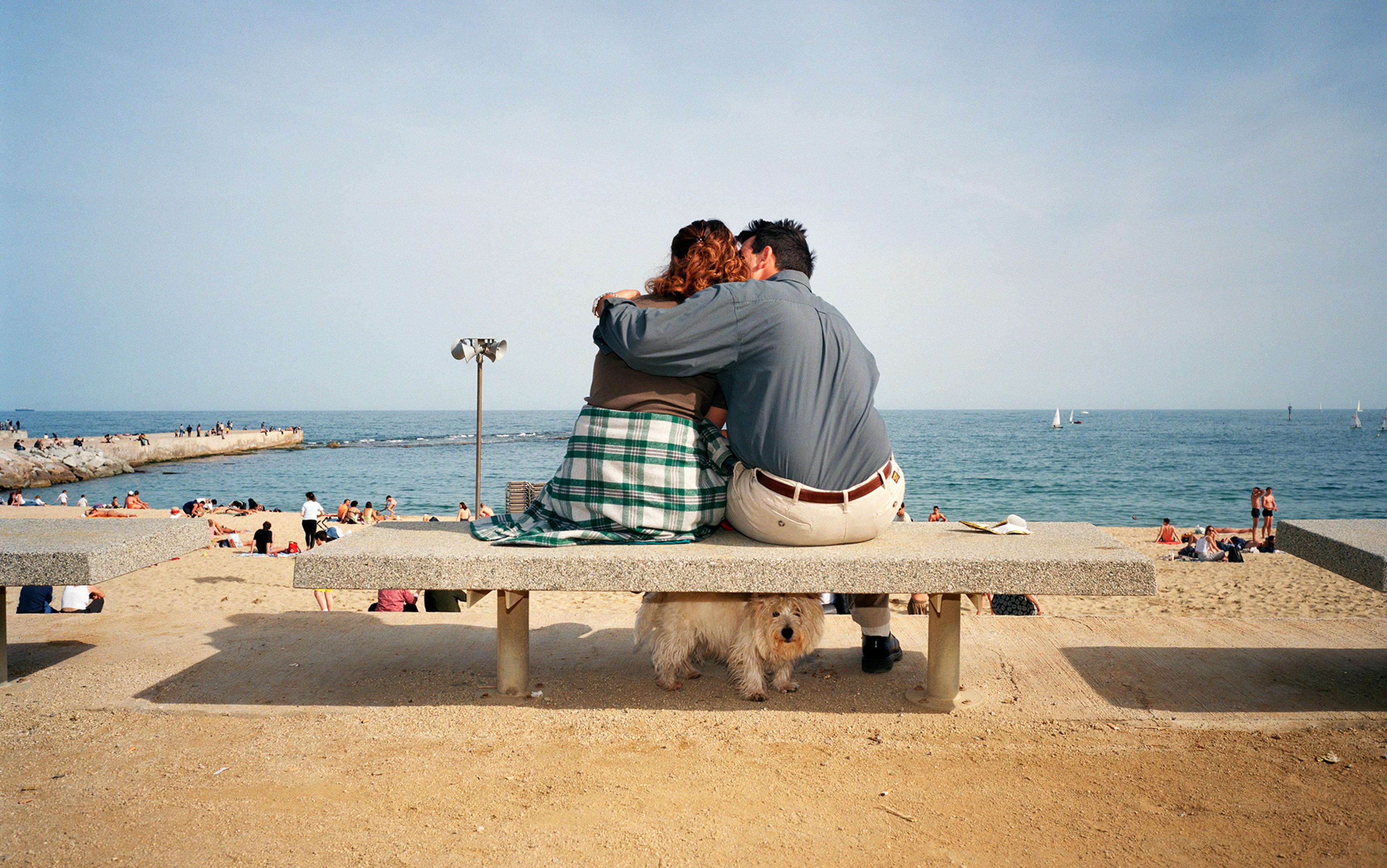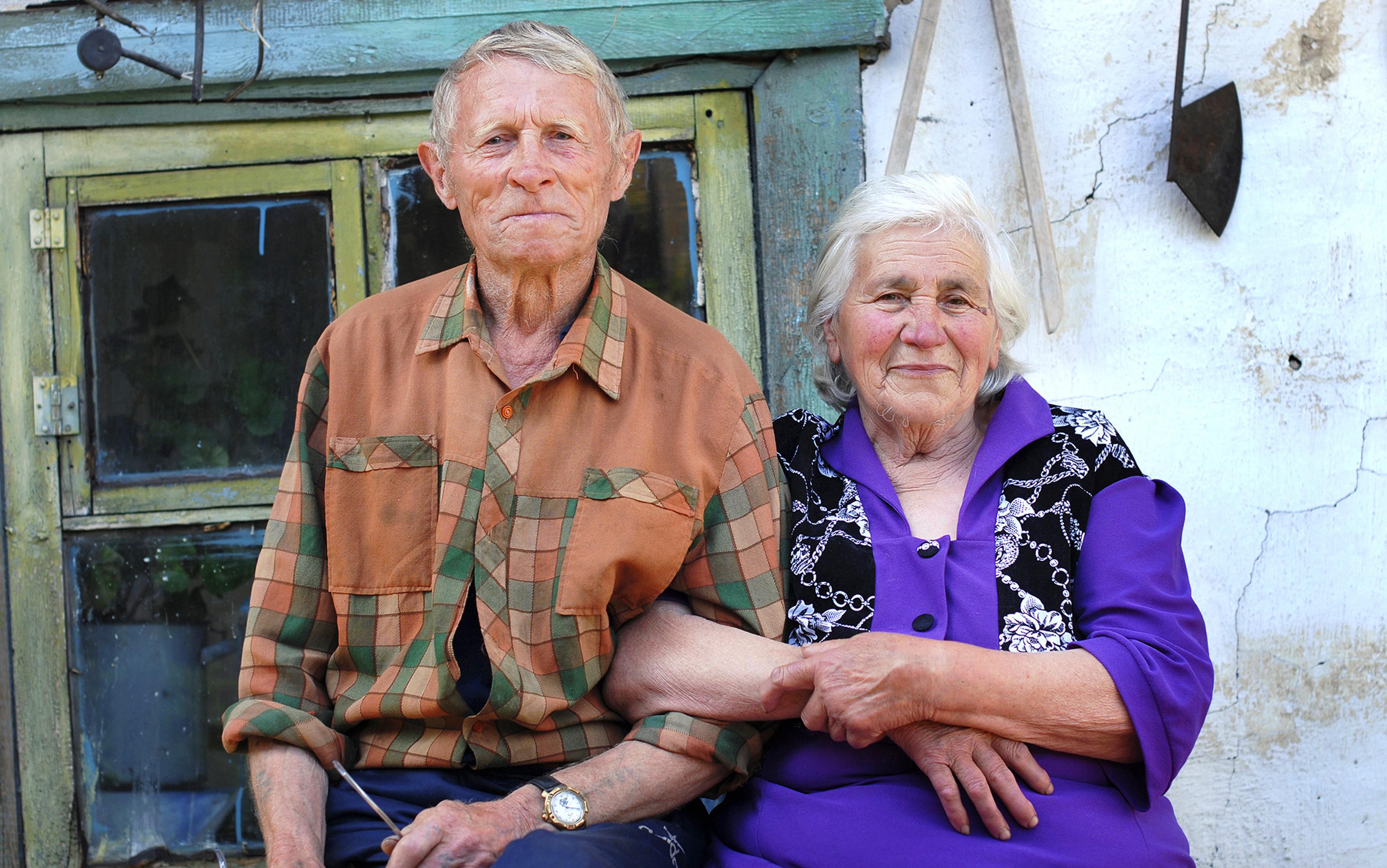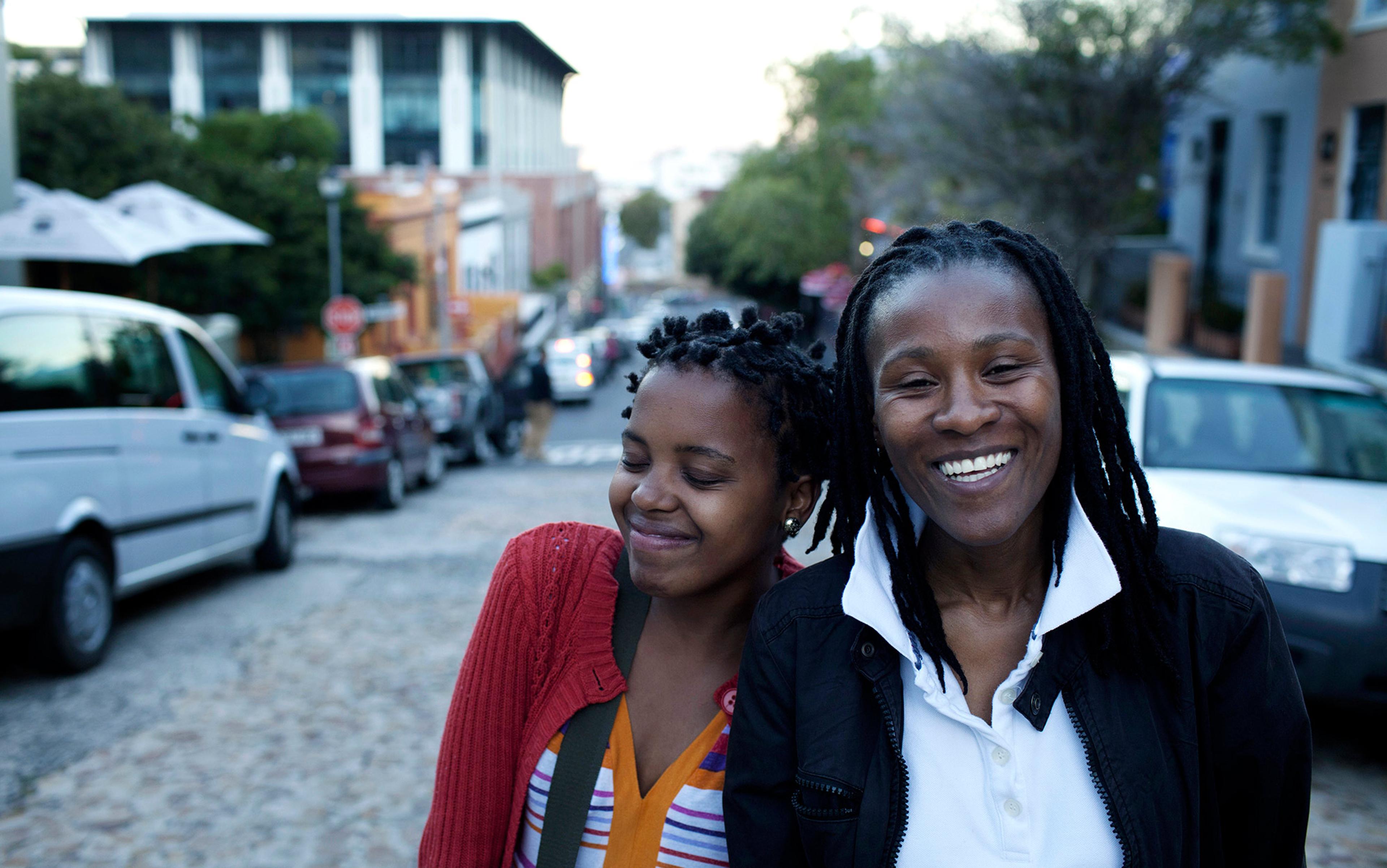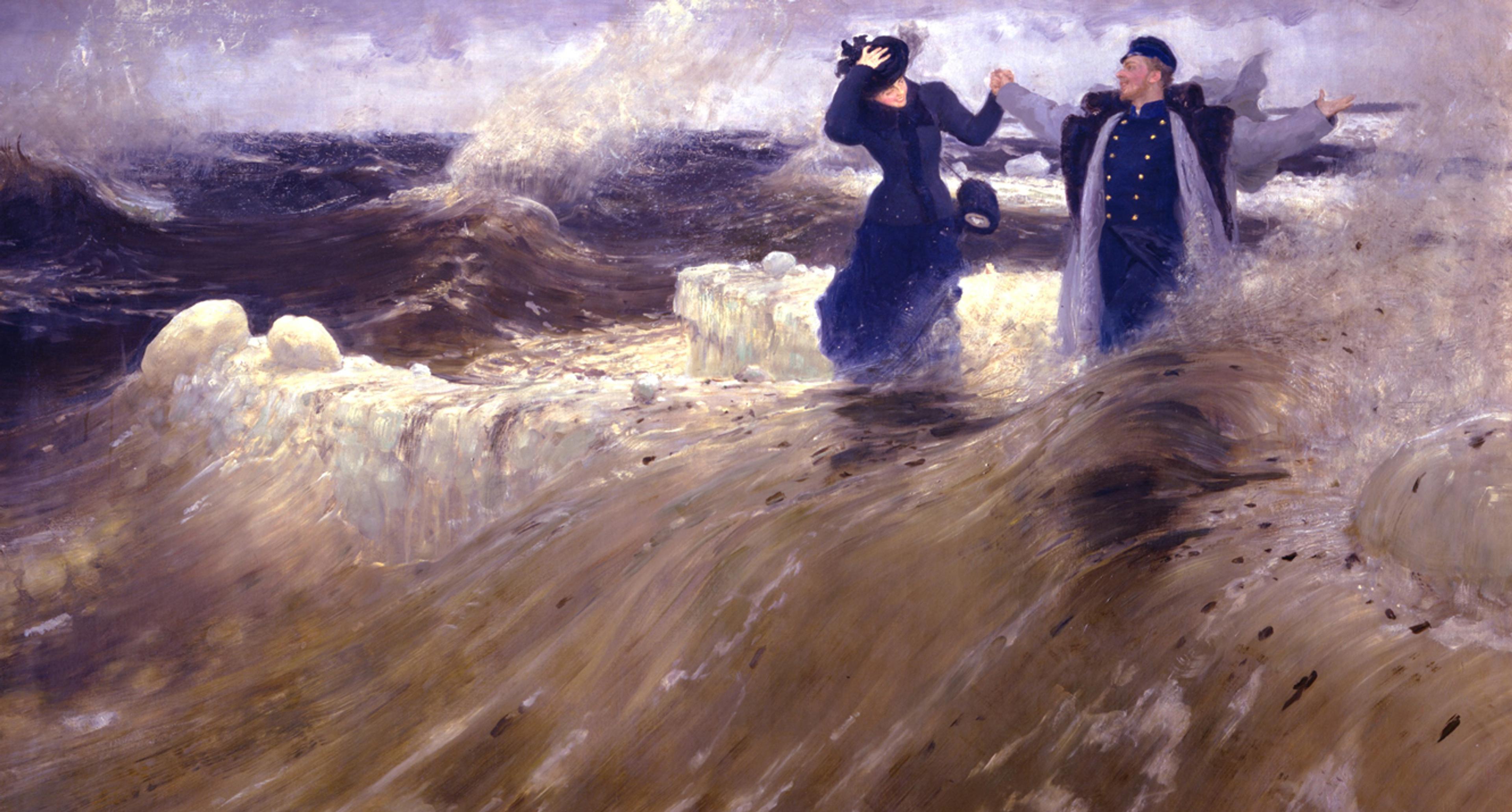It is a telling statistic that the most frequently ‘what is…?’ question typed into Google last year was: what is love? This fact probably reveals more about the society that asks an internet search engine such a thing, than any answer reveals about the nature of love. But if not Google, then where else can we look to understand love? The fantasy-making machines of Hollywood and Bollywood insist that there is only one answer worth indulging: the romantic kind. Most people, it would seem, agree, if only by default. They are dragged into seeking the person who will make them ‘whole’ via a dating website, or by a less tangible, though no less keenly felt urge cultivated by the same, dominant culture that insists we must find ‘the one’. Not that its origins are modern. Ever since the poet Sappho wrote, in the seventh century BCE, of love rippling under her skin like wind through trees, romantic love has been imagined as irresistible, a crucial experience that marks the peak of human existence.
Yet, the Google stats suggest that there is also a silent global search underway — many of us are clearly not satisfied with romance as an answer. The real problem, then, might be that contemporary culture leaves us unprepared for thinking about love in anything other than a one-dimensional mode. Just as marriage has seized the monopoly on public affirmations of love, so a notion of romance has restricted what we can imagine as a loving relationship.
The ancient Greeks, unlike us, did not have a single word for love but many. As is often noted, they had philia (friendship) and eros (desire), storge (affection) and agape (unconditional love). Perhaps that is another part of our problem. Our language invites us to think of love as a single, unified thing, when it is nothing of the sort. I suspect that words are not enough to address this modern deficiency. What we need is a new sense of the variety of love’s experiences. Fortunately there is another storehouse we can draw on from our ancient forebears: and it is not their words, but their myths that can enlighten us.
In a sense, we are lumbered with the dominance of romantic love; it can’t simply be sidestepped in favour of friendship, for example. That would never work: the erotic is simply too powerful. But the ancient myths can help us realise why romance is such a successful sell, if short-lived. Perhaps the myth that best captures the allure of romance is Aristophanes’ idea about soulmates, from Plato’s Symposium The story goes that human beings originally had two heads, four arms and four legs. We were shaped like round balls and tumbled across the face of the Earth at great speed. The gods grew alarmed at this display of power. So Zeus hatched a plan. He would cut human beings in half, leaving each with just one head, two arms and two legs.
These mutilated halflings were a pathetic sight. In particular, they developed the habit of devoting considerable amounts of their now limited energy searching for their lost halves. The desire to find the missing other was irresistible. Individuals sustained the search in spite of repeated break-ups and romantic disasters in the indefatigable belief that the right person — ‘the one’ — was out there. The promise of love, they felt, was nothing less than wholeness.
The myth has had a long life, accurately describing to this day the inner experience of those who feel life is incomplete without such love. In fact, it wasn’t until the 18th century that Aristophanes’ way of thinking about love reached its logical conclusion, when Jean-Jacques Rousseau wrote of how he fell in love as a young man. Only after that experience, he mused, could he be sure that he had genuinely lived. The upshot was that romantic love had become the goal in its own right. It matters not who you fall in love with, so long as you have fallen in love. The experiential ideal usurps the complex personal reality. That is why romance has us so much in its grip and empties us out in the process. It is the same with the dogmatic pursuit of happiness.
Crucially, however, Plato’s original myth about soulmates ends not with an elusive, illusory happiness, but with a twist. And here it might have something to teach us, suggesting an escape hatch out of the romantic stronghold. Zeus takes pity on the halved humans. He moves their genitals round so that when they meet they can embrace and find a little release for their passion. Sex is a temporary taste of unity, and it helps, though only to a degree. So when Hephaestus, the god of craftsmen, passes by and promises the couples a wish, these tragic figures speak with one voice. Weld us together, they cry: melt us one into the other!
For love to have a future, couples need to be able to move from falling in love to standing in love
Hephaestus obliges. The two become one. And the new situation reveals another way in which love gets stuck. Glued together, gazing only into each other’s eyes, the lovers lose touch with the rest of life. Not caring for anything else, death takes on an attractive hue, and they dream of sharing a last single breath together — a fantasy that lives on in the French euphemism, la petite mort, and in the romantic climax to Romeo and Juliet. But as the psychologist Erich Fromm put it in The Art of Loving (1956), for love to have a future, couples need to be able to move from falling in love to standing in love. Lovers must learn to embrace what lies outside their cosy twosome in order to survive. As Freud made explicit, dyadic love can be nurturing, but can equally be claustrophobic and alienating, and Aristophanes’ tale suggest it must be transcended.
The question is, how? How can the energy that romantic desire releases be directed outwards so that it feeds a passion not just for life together, but for life itself, led together. An answer is given by another ancient myth, one that is almost forgotten today. It concerns the infant god of love, familiar to us as Eros, but it also introduces us to another, less familiar figure, his brother.
Eros was born to Aphrodite and at first all seemed well. But then, Aphrodite noticed something that disturbed her. The child was not growing. His wings stayed as buds. His chubby flesh failed to develop muscles. It was as if he was possessed by a spirit that clung to infancy, refusing to step into maturity. Aphrodite became anxious and consulted her sister, the wise Themis. The goddess of good counsel (whose name translates literally as ‘what works’ ) advised her to have another child, this time by Ares, the brave god of war. Themis instructed that the second infant be called Anteros — he would be the equal of Eros. Aphrodite did as her sister said, and it worked. The two sons were rivals. They joshed and scrapped and fought, yet loved one another, too, and, as long as they played side by side, Eros developed normally. Yet, when they were apart, Aphrodite noticed that Eros would regress.
What Anteros brings is difficulty, a romantic equivalent to the sibling rivalry that young children hate so much in their jostling for a parent’s attention even though, like the tensions in an adult relationship, it can be the making of them, when sensitively handled. Anteros brings the courage required to resist the oceanic fantasy of disappearing into another’s arms, and instead embarks on the difficult process of making a life out of love. What he stands for, we might say, is the healthy spiritedness that lies behind lovers’ tiffs and rows which, if they can be reflected on and learnt from, make for maturity. The 16th-century proverb conveys this Anterotic dynamic: ‘The quarrel of lovers is the renewal of love’. If Eros is the god of love who shoots people with his arrows and turns them mad with desire, Anteros is the god of love who opposes the madness with a mix of his aunt’s pragmatism and his father’s strength.
To onlookers, it is unclear whether the two are making love or locked in some form of mutual violation
But the myth tells us more. Anteros’ aunt Themis was also known for her skill in bringing conflicting energies into a healing alignment. Today, her successors are couples’ therapists: they tend to be more interested in how troubled couples handle the emotions unleashed by their rows, rather than how to avoid rows in the first place. The anger and hate, fear and vulnerability of difficult relationships can be an opportunity. This is not your lost half, the therapist implies, but it is someone with whom you might find more integration and wholeness for yourself. Life is not perfected through love, as the romantic fantasy implies, but through love you can find more of life. Conversely, an inability to handle conflict is a good predictor of divorce.
It’s worth reflecting on the detail that Anteros helped his brother only while they played together. When they were apart, Eros regressed. Perhaps this conveys the value of commitment in relationships, a commitment that provides a container for the ups and downs, allowing them to be worked through. There is no static ‘happily ever after’, but a continuing need to play together. It suggests that a good relationship comes from the future, not the past, as Aristophanes’ myth implies. Love is more made than found.
In his book Anteros: A Forgotten Myth (2011), Craig Stephenson gathers evidence that Eros’ brother might not have vanished after all. He discusses Dante Gabriel Rossetti’s poem, ‘Hero’s Lamp’ (1875), which speaks of a lamp that is dedicated to Anteros and can only be lit when a love lasts a lifetime — unlike the mad love Leander had for Hero, which led him to attempt to cross the sea to reach her too many times and drown.
Meanwhile, the famous wrestling scene in DH Lawrence’s novel, Women in Love, can be read, Stephenson argues, as a depiction of the rivalry between Eros and Anteros. Rupert Birkin and Gerald Crich wrestle ‘swiftly, rapturously, intent and mindless at last’. Birkin learns from the aggression, safely but fully expressed in the fight: his marriage to Ursula Brangwen will have to combine elements of unity and adversity to work. Separateness in union can be achieved only by holding opposites in tension, as the critic Frank Kermode has read into Lawrence. Lovers must reach ‘an equilibrium beyond the ordinary notion of sexual love’.
Fundamentally, the myth of Eros and Anteros is about a triangular form of love. The brothers fight as siblings, vying for the attention of Aphrodite. It is this kind of love that is life-giving, because Eros and Anteros can desire something outside their immediate dyadic concerns. Their love is triangular: it is fired by someone or something beyond their love for each other. Their rivalry draws them towards external elements in life — which is to say, life itself. Hence, Eros matures.
Plato built the myth of Anteros into one of his dialogues. The triangular element it seems, particularly interested him. In the Phaedrus dialogue, he describes what happens when individuals fall in love (this much is familiar): romantic urges compel them to rush together, propelled by desire. To onlookers, it is unclear whether the two are making love or locked in some form of mutual violation. But some lovers are blessed by what Plato calls an Anterotic dynamic. It is as if they are able to prise themselves apart from one another, stand back a little, and observe what is going on. A third space opens up between them. It brings an essential capacity for self-awareness.
A couple can work out not only how to live together but how to live well together
This gap has a dramatic effect on the relationship. No longer are they just driven by their lust for one another. Instead, in time, a more expansive intimacy develops, which has a quality akin to friendship. The words of the French writer and poet Antoine de Saint-Exupéry come to mind: ‘Experience shows us that love does not consist in gazing at each other but in looking together in the same direction.’ As lovers, two people look only into each other’s eyes; as friends, they can look ahead together. They begin to see a life that lies beyond them and, supported by one another — now standing in love — they have the resources to step into the future together.
What is interesting about Plato’s account is that he believes this life-enhancing friendship is the result of erotic love. His philosophy is not a denial of eros, but its skilful channelling, tricky as that is to pull off. This explains the original meaning of the phrase ‘Platonic friendship’ — not that the erotic was never to be felt between such friends (an idea that would have been regarded by Plato as a form of denial), but rather that the sexual expression of the romantic element is incorporated and transcended. In Freudian terms, the erotic instinct is sublimated. Its energy becomes available for the passionate pursuit of philosophy — an attractive possibility given that, for Plato, philosophy meant the cultivation of a life that makes for flourishing. To capture the same sentiment in a less highfalutin way, such a couple can work out not only how to live together but how to live well together.
Triangular love, where space is made in a relationship for life (and love) beyond the confines of the couple, is the highest form of human love because it makes a good life possible. As the philosopher Anthony Price puts it in Love and Friendship in Plato and Aristotle (1989), ‘in a promising soul well prompted, it is receptive of, and responsive to, the opening of new vistas’. It is a less fearful and self-obsessed love than that of Narcissus, and has space for others unlike Aristophanes’ glued-together lovers. To use Iris Murdoch’s phrase in her reading of Plato, this love has ‘an increased awareness of, sensibility to, the world beyond the self’.
But this raises an important question. If we want a way out of romantic confines, where can we pay homage to Anteros today? Craig Stephenson points out that what we popularly call the statue of Eros on the Shaftesbury memorial fountain in Piccadilly is actually Anteros. It was made in 1893 by the sculptor Alfred Gilbert who felt his own life mirrored the struggles of the rival brothers of love. Gilbert saw a reflection of his impulsive character in Eros and longed to know for himself more of the realism associated with Anteros. He must have felt that Anteros was the more suitable god to invoke in the heart of that romantic part of London. Personally, I offer Anteros a surreptitious, reverent bow each time I pass. It is in cautious thanks for the tricky side of love.
